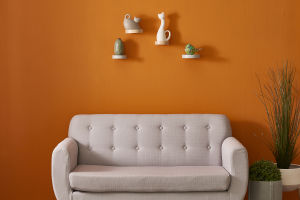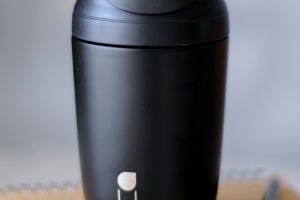In daily life, house cleaning is an essential step to maintaining a clean and hygienic home environment.
However, many people may overlook some areas that are often hotbeds for bacteria and dust.
Here, Lykkers, we will explore common hygienic dead corners in the home and how to clean them effectively.
Common Hygienic Dead Corners and Effective Cleaning Methods
1. The Back and Bottom of the Refrigerator:
The refrigerator is indispensable in the kitchen, but its back and bottom are prone to accumulating dust and dirt. Cleaning the back of the refrigerator regularly can prevent dust from clogging the heat sink and affecting the refrigerator's operating efficiency.
To clean this area, use a vacuum cleaner or a damp cloth. For the bottom, move the refrigerator slightly forward to access and clean the accumulated dust and debris. Ensure you unplug the refrigerator before cleaning to avoid any electrical hazards.
2. Range Hood:
If the range hood is not cleaned for a long time, a lot of grease will accumulate, affecting its working efficiency and potentially creating a fire hazard. Regularly remove the filter of the range hood and clean it with warm water and detergent.
If the grease is particularly stubborn, using a professional degreaser can help. Soaking the filter in warm, soapy water for about 15-20 minutes before scrubbing can make the cleaning process easier and more effective.
3. The Top and Inner Corners of the Cabinet:
The top and inner corners of cabinets are prone to dust accumulation and are often overlooked. Use a long-handled brush or vacuum cleaner to clean the top and corners of the cabinets effectively.
For the inner corners, a microfiber cloth or a small brush can be used to reach those tight spaces. Cleaning these areas every few months can prevent the buildup of dust and ensure a hygienic kitchen environment.
4. Sofa Bottom and Gaps:
The bottom of the sofa and the gaps between cushions are prone to dirt and grime, especially in homes with pets or children. Regularly moving the sofa and using a vacuum cleaner to clean the dust and debris from the bottom and gaps is an essential step in keeping the living room clean.
For more thorough cleaning, consider removing the cushions and using a handheld vacuum to reach deeper crevices. Additionally, rotating and flipping the cushions regularly can help distribute wear and tear more evenly.
5. TV and Audio Equipment:
Electronic equipment is prone to dust accumulation, which can affect its performance. Using a microfiber cloth or a special electronic equipment cleaning cloth to gently wipe the surface of the TV and audio equipment can avoid scratches and static electricity buildup.
For hard-to-reach areas, compressed air can be used to blow out dust from vents and connectors. Regularly cleaning these devices can prolong their lifespan and maintain optimal performance.
6. Curtains and Blinds:
Curtains and blinds are magnets for dust and allergens. If they are not cleaned regularly, they can affect indoor air quality. Curtains can be removed and washed according to the manufacturer's instructions, typically every few months.
Blinds can be wiped with a damp cloth or a special cleaning brush. For more efficient cleaning, consider using a vacuum cleaner with a brush attachment to remove dust from both sides of the blinds. Additionally, rotating the blinds periodically can help prevent dust buildup.
Home cleaning is not only an important step to maintaining a clean environment but also a crucial part of protecting the health of family members.
By paying attention to and cleaning these often overlooked hygienic dead corners, you can effectively reduce the accumulation of bacteria and dust, creating a clean and comfortable living environment.
Hopefully, this article provides useful insights and tips to help you clean every corner of your home more comprehensively during your next cleaning session.


